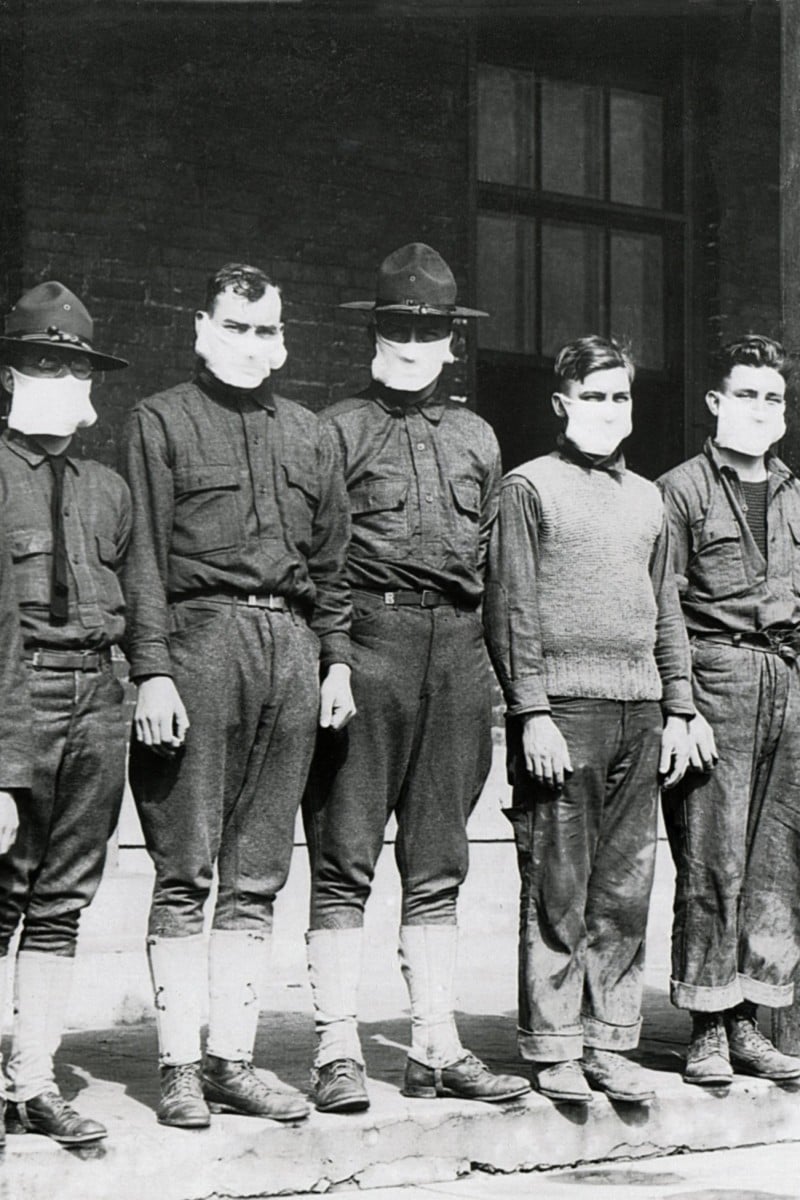
Study Buddy (Explorer): Face masks’ wide public use began with 1918 Spanish flu, and the practice spread worldwide
- Each week, Study Buddy Explorer presents an interesting story that we have adjusted to be more accessible for all English learners
- Check your reading comprehension using the questions below or in the linked Kahoot! game
 During the 1918 Spanish flu pandemic, health care workers at a US Army hospital in the state of New York wore masks to avoid infection. Photo: Shutterstock
During the 1918 Spanish flu pandemic, health care workers at a US Army hospital in the state of New York wore masks to avoid infection. Photo: ShutterstockContent provided by the British Council
Read the following text and answer questions 1-9 below:
[1] The Spanish flu epidemic broke out in 1918 and claimed tens of millions of lives by the time it finally subsided in 1921. It also first brought the use of face masks to the world’s attention. Before this event, face masks were seen only in medical settings. But this earlier global pandemic helped make people aware that forms of nose and mouth coverings helped reduce the spread of highly infectious diseases.
[2] Broader public health lessons from the Spanish flu epidemic had been mostly absorbed by the 1930s. Among the hygiene-conscious Japanese and other parts of East Asia, such as Korea and Taiwan, face masks became commonplace among anyone with respiratory infections likely to cause coughing and spitting.
[3] Influenza was not the only disease in the past where face masks were used to “flatten the infection curve”. During Japan’s occupation of Hong Kong, a diphtheria outbreak in the Sham Shui Po prisoner-of-war camp led to quarantine of patients to break the chain of infection. Confirmed cases undergoing quarantine and their close contacts wore masks made from white cotton, gauze or other fabrics. These masks were sterilised by boiling before reuse. Scarce resources meant it was not possible to make face masks that could be disposed of after one use.
[4] Not long after Hong Kong’s severe acute respiratory syndrome (Sars) outbreak subsided in 2003, I visited my elderly godmother in rural Queensland in Australia. She had visited Hong Kong many years ago in her late 70s. This sparked off an enthusiasm for anything related to the city. Our conversations turned to how the Sars outbreak had been handled and the universal wearing of face masks in Hong Kong at that time.
[5] Reusable cloth face masks were a dimly remembered part of my godmother’s early childhood. She was born in 1919, when the Spanish flu began to spread around the globe. On recalling that she still had those face masks, we pulled out the battered fibre suitcase from the spare room. Tucked away in a brown paper envelope were several baby- and infant-sized cloth face masks, brightly embroidered with bunny rabbits, sprays of flowers and other patterns.
[6] Like the current Covid-19 pandemic, the Spanish flu took a few years to finally burn itself out globally. Meanwhile, these items were everyday attire in rural Queensland. To my lasting regret, I didn’t think to photograph these historically important artefacts, and sadly have no idea what became of them when that dear person passed away, several years later.
Source: South China Morning Post, March 8
Questions
Play a Kahoot! game about this story as a class or with your friends by clicking on the link here.
Or play on your own below to test your understanding:
1. When did the Spanish flu pandemic end?
2. What is the main use of face masks according to paragraph 1?
3. Which places mentioned in paragraph 2 started wearing face masks as common practice when someone was sick?
A. Korea
B. Taiwan
C. Japan
D. all of the above
4. Find a word in paragraph 2 that means “happening often, and therefore not unusual”.
5. Read paragraph 3, and decide if the following statements about the Sham Shui Po prisoner-of-war camp are True, False or Not Given. (4 marks)
(i) Patients infected with diphtheria were sent to quarantine.
(ii) Those who were quarantined had to wear masks.
(iii) The used masks were thrown away every day.
(iv) Infected patients were required to quarantine for two weeks.
6. What does the phrase “confirmed cases” in paragraph 3 refer to?
7. Why did the writer’s godmother have an interest in Hong Kong?
A. The city’s use of face masks in 2003 reminded her of her childhood.
B. Her past travel to the city made her eager to learn more about it.
C. She was a doctor curious about the Sars outbreak.
D. information not given
8. At the time of the writer’s visit, which of the following items from childhood did his godmother still keep according to paragraph 5?
A. her mother’s face masks
B. a photo of herself wearing a face mask
C. the cloth masks she used as a child
D. a pamphlet encouraging people to wear masks
9. What does the writer wish he had done according to paragraph 6?
Answers
1. 1921
2. to help reduce the spread of highly infectious diseases.
3. D
4. commonplace
5. (i) T; (ii) T; (iii) F; (iv) NG
6. patients who were confirmed to be infected with diphtheria
7. B
8. C
9. He wished he had taken photos of his godmother’s face masks.
